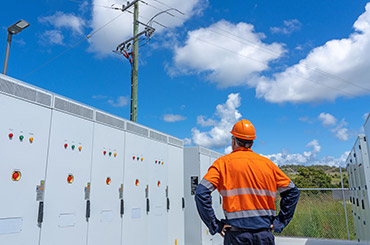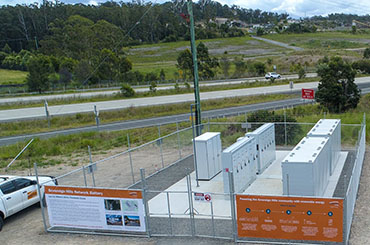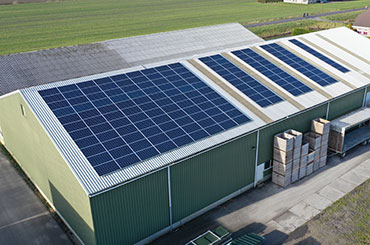
Community batteries support renewable energy and play a key role in allowing our network to transition to a clean energy future. These batteries store excess solar and share the energy back when energy demand is high and solar systems are no longer generating. Communities can generate, store and use locally sourced renewable energy, which receiving better value from their rooftop solar.
We have two community battery trials underway:
- Australian Government's Communities Batteries for Household Solar Program
- Pole-mounted batteries in partnership with Origin Energy
Australian Government's Community Batteries for Household Solar Program
We have successfully received grant funding as part of the Australian Government's Community Batteries for Household Solar Program. Work is underway to integrate batteries into the communities of Leeton, Goulburn and Maloneys Beach by early 2025.
To find out more about these projects visit our Essential Engagement page.
Pole-mounted batteries
We have partnered with Origin Energy to trial pole-mounted batteries in selected communities. Pole-mounted batteries allow flexibility of location and are placed where they can offer the most benefits to customers and the network. Trials are planned for Armidale, Bathurst, Dubbo, Port Macquarie and Wagga Wagga. Find out more about the pole-mounted battery trial.
Pole-mounted batteries provide many benefits including environmental, financial and power quality and these benefits can be shared by many, regardless of whether you produce solar or own the home that you live in.



